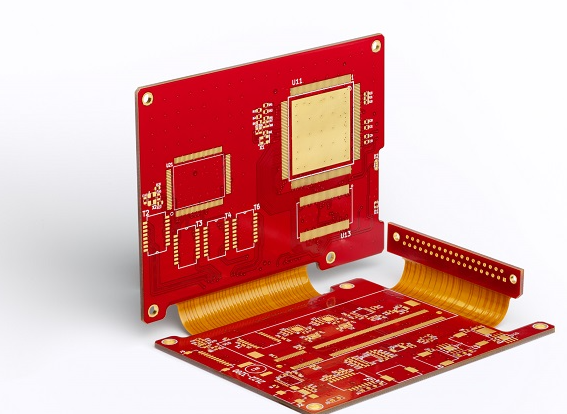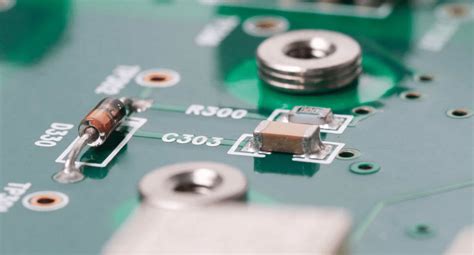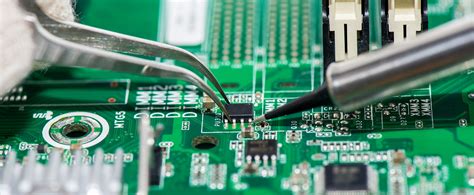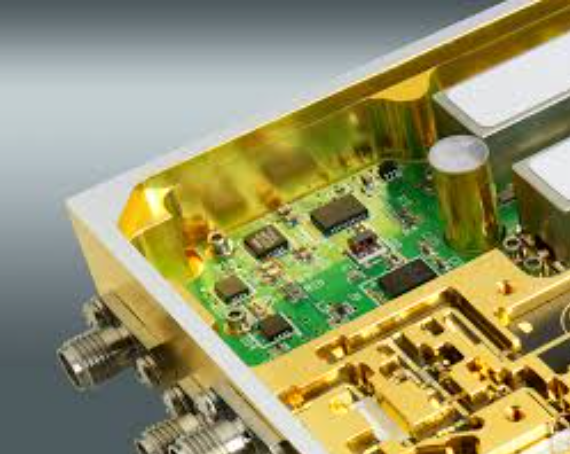Thickness of flex pcb
Understanding The Importance Of Flex PCB Thickness In Modern Electronics
In the realm of modern electronics, the significance of flex PCB (Printed Circuit Board) thickness cannot be overstated. Flex PCBs, known for their ability to bend and conform to various shapes, have become indispensable in the design and manufacture of contemporary electronic devices. The thickness of these flexible circuits plays a crucial role in determining their performance, reliability, and application suitability.
To begin with, the thickness of a flex PCB directly impacts its flexibility and durability.
Thinner flex PCBs are more pliable, allowing them to be used in applications where space constraints and complex geometries are prevalent. For instance, in wearable technology and medical devices, where the circuit must conform to the contours of the human body, a thinner flex PCB is often preferred. Conversely, thicker flex PCBs offer enhanced mechanical strength and are better suited for applications that require robust handling and resistance to physical stress.
Moreover, the electrical performance of a flex PCB is intricately linked to its thickness.
Thinner PCBs generally exhibit lower impedance, which is beneficial for high-frequency signal transmission. This characteristic is particularly advantageous in telecommunications and high-speed data transfer applications, where signal integrity is paramount. On the other hand, thicker PCBs can support higher current-carrying capacities, making them ideal for power distribution in electronic systems.
In addition to mechanical and electrical considerations, the manufacturing process of flex PCBs is also influenced by their thickness.
Thinner PCBs are more susceptible to damage during handling and assembly, necessitating careful processing and specialized equipment. The lamination process, for instance, must be meticulously controlled to prevent defects such as delamination or warping. Thicker PCBs, while easier to handle, may require additional steps such as drilling and plating, which can increase production time and cost.
Furthermore, the choice of materials used in the construction of flex PCBs is closely tied to their thickness.
Polyimide, a common substrate material, offers excellent thermal stability and flexibility, making it suitable for a wide range of thicknesses. However, the adhesive layers and copper foil used in the PCB stack-up must be carefully selected to ensure optimal performance. For example, thinner adhesive layers can enhance flexibility but may compromise the overall strength of the PCB. Similarly, the thickness of the copper foil must be balanced to achieve the desired electrical and mechanical properties.
The environmental conditions in which a flex PCB operates also dictate its thickness requirements.
In high-temperature environments, such as automotive or aerospace applications, thicker PCBs are often necessary to withstand thermal expansion and contraction. Additionally, exposure to harsh chemicals or moisture can degrade thinner PCBs more rapidly, necessitating the use of protective coatings or encapsulation techniques.
In conclusion, the thickness of a flex PCB is a critical parameter that influences its flexibility, durability, electrical performance, manufacturing process, material selection, and environmental resilience. As electronic devices continue to evolve, the demand for customized flex PCB solutions will only increase, underscoring the importance of understanding and optimizing PCB thickness. By carefully considering these factors, designers and manufacturers can ensure that their flex PCBs meet the stringent requirements of modern electronic applications, thereby enhancing the overall performance and reliability of their products.
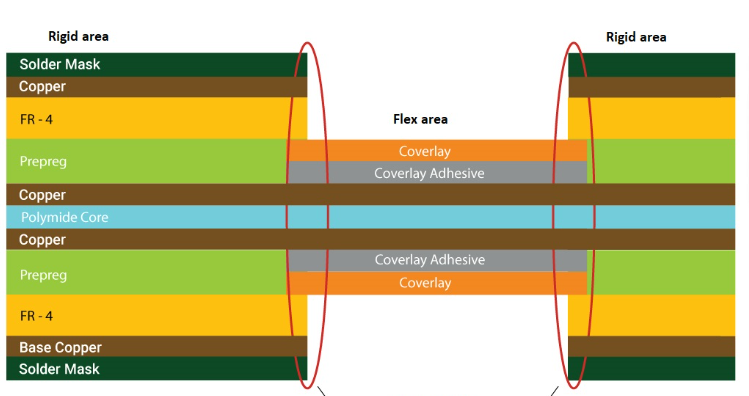
How Flex PCB Thickness Affects Performance And Durability
The thickness of a flexible printed circuit board (Flex PCB) is a critical factor that significantly influences its performance and durability. Flex PCBs are widely used in various applications, from consumer electronics to medical devices, due to their ability to bend and conform to different shapes. Understanding how the thickness of these circuits affects their functionality and longevity is essential for engineers and designers.
To begin with, the thickness of a Flex PCB directly impacts its flexibility.
Thinner Flex PCBs are more pliable, allowing them to bend and twist without causing damage to the conductive traces or the substrate. This characteristic is particularly advantageous in applications where space constraints and complex geometries are prevalent, such as in wearable technology and compact electronic devices. Conversely, thicker Flex PCBs offer less flexibility, which may limit their use in such applications but can provide other benefits.
In addition to flexibility, the thickness of a Flex PCB also affects its mechanical strength.
Thicker Flex PCBs are generally more robust and can withstand greater mechanical stress and strain. This increased durability is beneficial in environments where the circuit board may be subjected to repeated bending or harsh conditions.
For instance, automotive and industrial applications often require Flex PCBs that can endure significant mechanical wear and tear. However, it is important to balance thickness with flexibility to ensure that the board can still perform its intended function without failure.
Moreover, the electrical performance of a Flex PCB is influenced by its thickness.
Thicker boards can accommodate wider and thicker conductive traces, which can carry higher currents with reduced resistance. This capability is crucial in power-intensive applications where efficient current flow is necessary to maintain optimal performance.
On the other hand, thinner Flex PCBs may have limitations in current-carrying capacity, which could lead to increased resistance and potential overheating issues. Therefore, selecting the appropriate thickness is vital to ensure that the electrical requirements of the application are met.
Thermal management is another aspect where Flex PCB thickness plays a significant role.
Thicker Flex PCBs can dissipate heat more effectively due to their larger surface area and increased material volume. This property is essential in applications where heat generation is a concern, such as in high-power LED lighting or power electronics. Effective thermal management helps prevent overheating, which can degrade the performance and lifespan of the electronic components. Conversely, thinner Flex PCBs may require additional thermal management solutions, such as heat sinks or thermal vias, to maintain safe operating temperatures.
Furthermore, the manufacturing process and cost considerations are influenced by the thickness of Flex PCBs.
Thinner Flex PCBs are generally more challenging to manufacture due to their delicate nature, requiring precise handling and advanced fabrication techniques. These factors can increase production costs and lead times. In contrast, thicker Flex PCBs are easier to handle and manufacture, potentially reducing production complexities and costs. However, the choice of thickness should always be guided by the specific requirements of the application rather than solely by manufacturing convenience.
In conclusion, the thickness of a Flex PCB is a multifaceted parameter that affects its flexibility, mechanical strength, electrical performance, thermal management, and manufacturing considerations. Engineers and designers must carefully evaluate these factors to select the appropriate thickness that meets the demands of their specific application. By doing so, they can ensure that the Flex PCB delivers optimal performance and durability, ultimately contributing to the reliability and success of the final product.
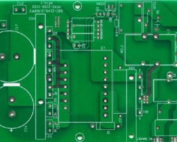
Choosing The Right Flex PCB Thickness For Your Application
When selecting the appropriate thickness for a flexible printed circuit board (flex PCB), it is crucial to consider various factors that can significantly impact the performance and reliability of the final product. Flex PCBs are widely used in applications where space constraints and mechanical flexibility are paramount, such as in wearable devices, medical equipment, and aerospace technology. Therefore, understanding the nuances of flex PCB thickness is essential for optimizing both functionality and durability.
To begin with, the thickness of a flex PCB is determined by the combination of its conductive layers, insulating layers, and any additional protective coatings.
The conductive layers, typically made of copper, are responsible for the electrical pathways, while the insulating layers, often composed of polyimide or polyester, provide the necessary electrical isolation and mechanical support. The overall thickness can range from as thin as 0.1 mm to several millimeters, depending on the specific requirements of the application.
One of the primary considerations when choosing the thickness of a flex PCB is the mechanical flexibility required.
Thinner flex PCBs offer greater flexibility, making them ideal for applications that involve dynamic bending or folding. For instance, in wearable technology, where the circuit must conform to the contours of the human body, a thinner flex PCB is advantageous. However, it is important to note that while thinner PCBs provide enhanced flexibility, they may also be more susceptible to mechanical stress and damage. Therefore, a balance must be struck between flexibility and durability.
In addition to mechanical flexibility, the electrical performance of the flex PCB is also influenced by its thickness.
Thicker conductive layers can carry higher currents and reduce electrical resistance, which is beneficial for power-intensive applications. Conversely, thinner conductive layers may be sufficient for low-power applications but could introduce higher resistance and potential signal integrity issues. Therefore, the electrical requirements of the application must be carefully evaluated to determine the optimal thickness of the conductive layers.
Another critical factor to consider is the thermal management of the flex PCB.
Thicker PCBs can dissipate heat more effectively, which is essential for applications that generate significant amounts of heat, such as LED lighting or power electronics. On the other hand, thinner PCBs may require additional thermal management solutions, such as heat sinks or thermal vias, to ensure reliable operation. Consequently, the thermal characteristics of the application should be taken into account when selecting the flex PCB thickness.
Furthermore, the manufacturing process and cost implications of different flex PCB thicknesses should not be overlooked.
Thinner PCBs may be more challenging to manufacture and handle, potentially leading to higher production costs and longer lead times. Additionally, the choice of materials and the complexity of the design can also influence the overall cost. Therefore, it is essential to work closely with the PCB manufacturer to understand the trade-offs and ensure that the chosen thickness aligns with both technical and budgetary constraints.
In conclusion, selecting the right flex PCB thickness for your application involves a careful consideration of mechanical flexibility, electrical performance, thermal management, and manufacturing constraints. By thoroughly evaluating these factors, you can optimize the design of your flex PCB to meet the specific demands of your application, ensuring both functionality and reliability. As technology continues to advance, the importance of choosing the appropriate flex PCB thickness will only grow, making it a critical aspect of modern electronic design.

Innovations In Flex PCB Manufacturing: Advances In Thickness Control
The evolution of flexible printed circuit boards (FPCBs) has been marked by significant advancements in various aspects of their design and manufacturing. Among these, the control of thickness has emerged as a critical factor, influencing the performance, reliability, and application range of FPCBs. As the demand for more compact and efficient electronic devices continues to grow, innovations in thickness control have become paramount in the field of flex PCB manufacturing.
One of the primary drivers behind the need for precise thickness control in FPCBs is the miniaturization of electronic devices.
Modern gadgets, from smartphones to wearable technology, require circuits that can fit into increasingly smaller spaces without compromising functionality. Consequently, manufacturers have focused on developing techniques that allow for the production of ultra-thin FPCBs. These advancements not only enable the creation of more compact devices but also enhance their flexibility, making them suitable for a wider array of applications.
To achieve such precise thickness control, manufacturers have turned to advanced materials and fabrication processes.
Polyimide films, for instance, have become a popular choice due to their excellent thermal stability, mechanical strength, and flexibility. These films can be produced in extremely thin layers, which are then laminated with conductive materials to form the FPCB. The use of such high-performance materials ensures that the final product maintains its integrity and functionality even at reduced thicknesses.
In addition to material innovations, advancements in manufacturing techniques have played a crucial role in thickness control.
Laser direct imaging (LDI) and other precision imaging technologies have enabled manufacturers to create finer circuit patterns with greater accuracy. These technologies allow for the precise deposition of conductive materials, ensuring uniform thickness across the entire surface of the FPCB. Moreover, the implementation of automated inspection systems has further enhanced quality control, allowing for the detection and correction of any deviations in thickness during the manufacturing process.
Another significant development in this area is the use of multi-layer FPCBs.
By stacking multiple layers of circuits, manufacturers can achieve greater functionality within a limited space. However, this approach also presents challenges in maintaining uniform thickness across all layers. To address this, advanced lamination techniques have been developed, ensuring that each layer adheres perfectly without adding unnecessary bulk. These techniques involve the use of specialized adhesives and precise pressure control, resulting in multi-layer FPCBs that are both thin and highly reliable.
Furthermore, the integration of flexible and rigid components within a single PCB, known as rigid-flex PCBs, has also benefited from innovations in thickness control.
This hybrid approach combines the best of both worlds, offering the flexibility of FPCBs and the stability of rigid PCBs. The challenge lies in seamlessly integrating these components without creating weak points or inconsistencies in thickness. Advanced bonding techniques and meticulous design considerations have made it possible to produce rigid-flex PCBs that meet the stringent requirements of modern electronic devices.
In conclusion, the advancements in thickness control for flexible printed circuit boards have been instrumental in meeting the demands of contemporary electronic applications. Through the use of high-performance materials, precision manufacturing techniques, and innovative design approaches, manufacturers have been able to produce FPCBs that are thinner, more flexible, and highly reliable. As technology continues to evolve, further innovations in this area are expected, paving the way for even more compact and efficient electronic devices.

